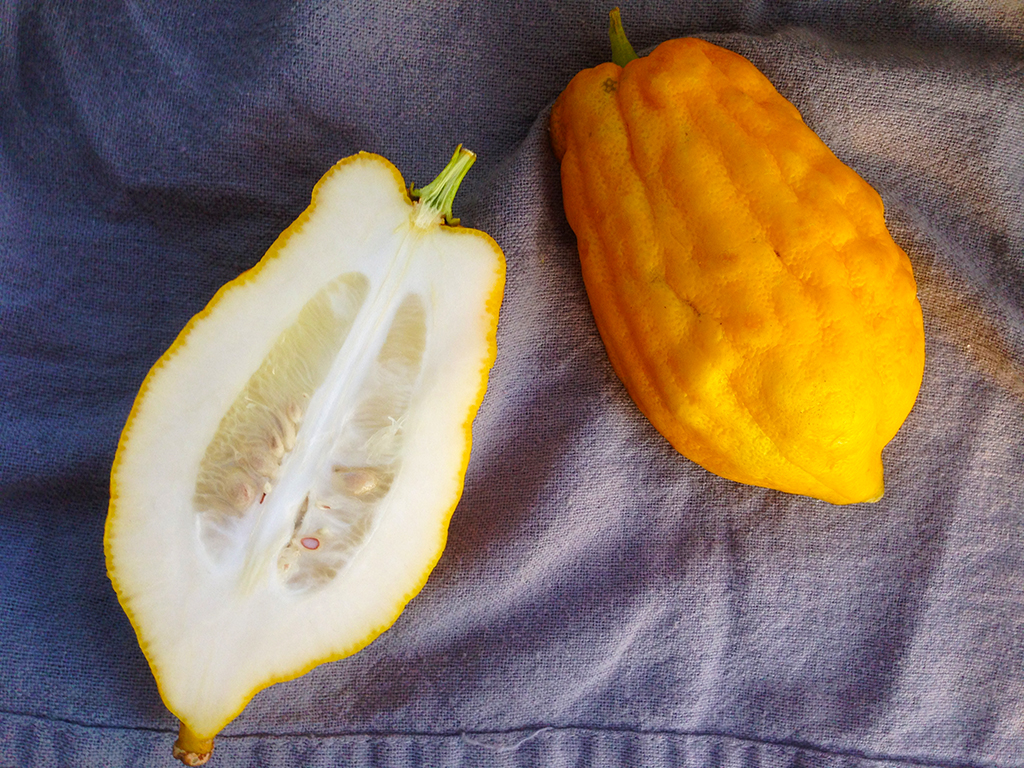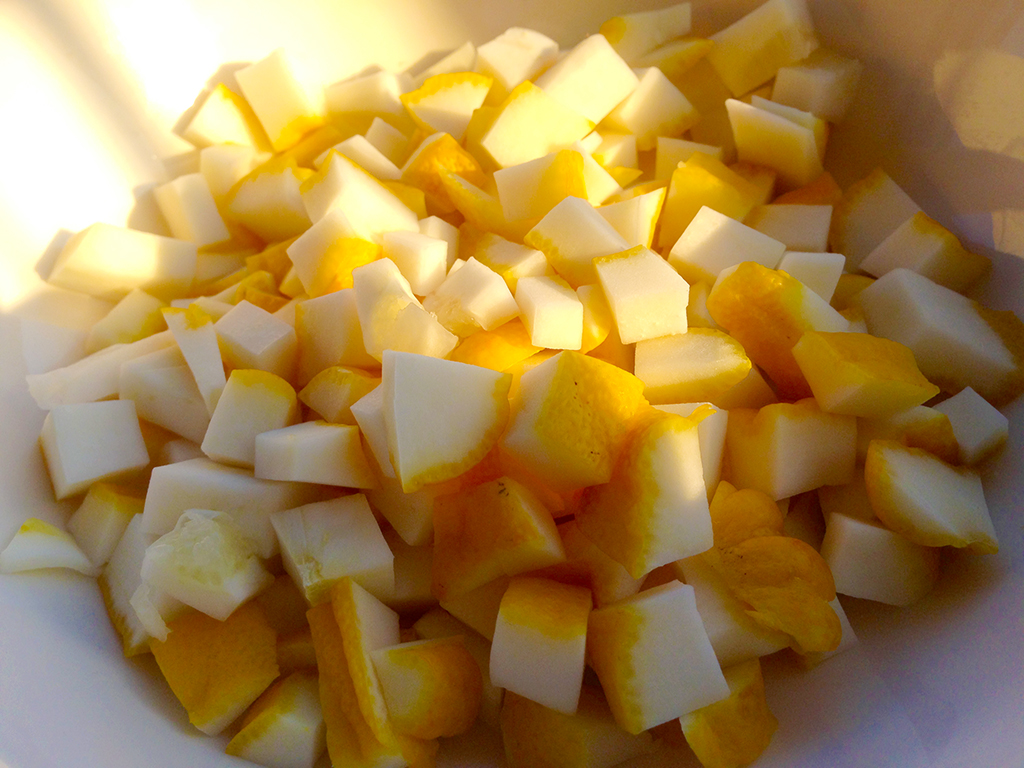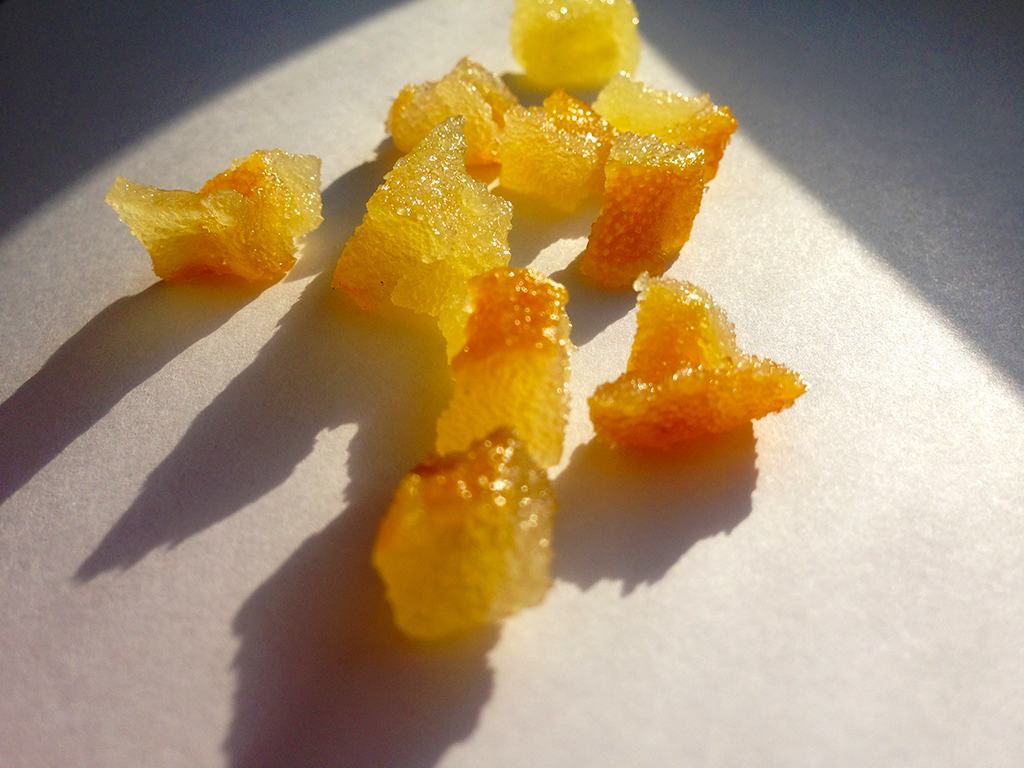 This fruit is a etrog. This fruit is a citron.
This fruit is a etrog. This fruit is a citron.
Last week was the Jewish holiday of Sukkot, a harvest festival that also commemorates the 40 years the Jews spent wandering in the desert. The festival centers around the sukkah, a temporary structure that the family “dwells” in over the week of the celebration –primarily eating and sleeping there. As part of this festival, you need “four species” to bless your sukkah: palm, myrtle and willow branches as well as an etrog.
One day, I wanted to figure out what the hell an etrog was. So I googled it, and found this charming article about the “etrog man,” a non-Jewish farmer who grows them in California. To my surprise, I found out that etrog is the Hebrew word for citron.
Ok, what’s a citron? A citron is a member of the citrus family. Instead of eating the pulp, you eat the rind and the pith. It has a lovely scent, distinctly different from any other citrus. Today, it appears in the candy fruit mix for fruit cake and panettone. In 18th and 19th century America, candied citron was folded into all kinds of fancy cakes— we even made a substitute from watermelon rind. And in medieval Middle Eastern cooking, it was used fresh, like in this recipe for Bazmaawurd: chicken, walnuts, fresh herbs and citron rolled up in a lavash.
 Dice it up!
Dice it up!
So when Sukkot was over, I put out a call for leftover etrogs. The etrog/citrons used ritually are quite expensive–since they have to look perfect and be holy. But much like a Christmas tree, they just get chucked in the garbage when the holiday is done. My boss handed me her used etrog and I took it over to Jill’s – author of The Savage and the Sage–who candies her own citron for homemade panettone. Sweet and tart, my candied citron will simply return to work as a treat for my colleagues.
 Citron, candied.
Citron, candied.
***
Candied Citron
Adapted from Ehow.com by Jill Paradiso

the candied etrog looks sssoooo good,